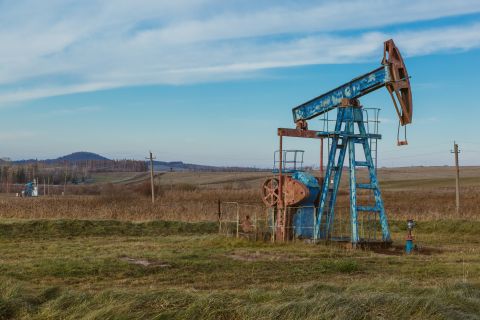Technology has only begun to scratch the surface in the unconventional sector of the oil and gas industry, especially considering a revolution from digital analytics to automation is imminent.
A panel of senior technology leaders, comprising operators and service providers, shared this sentiment at the Unconventional Resources Technology Conference (URTeC ) held in July. The panelists honed in on technologies that would make a difference in unconventional reservoirs.
Expanding on the topic, Concho Resources Inc.’s vice president of geoscience and technology, Chris Spies, said the industry has only really witnessed the top of the glacier when it comes to technology.
“From my perspective, the amazing thing about watching unconventionals grow over the last five years is that there hasn’t been a real breakthrough in technology, and there hasn’t been a major leap in innovation,” he said. “It’s just all these little tiny tweaks to the landing zone, to the perf cluster spacing, to the proppant we use [and] to the fluid volumes.”
Spies went on to compare the technology revolution to a living, breathing organism that is on an “exponential learning curve and it’s not stopping now,” adding that the downturn a few years back was actually a positive setup for the industry.
“It’s much bigger than I originally anticipated. We’re learning new things every day,” he said.
Adopting automation
Hege Kverneland, corporate vice president and CTO at National Oilwell Varco (NOV), agreed with Spies.
Because of the downturn, Kverneland said oil companies steered away from new technologies and systems that were introduced by service companies at that time because they were making money anyway. Service companies like NOV, she said, lost more money and workers than oil companies.
Despite not listening before, Kverneland said oil companies are more receptive now.
“Implementing new technologies is much easier to do now than it was three to four years ago, so that’s the good part [about the downturn],” she explained.
Serving as the moderator for the panel, ConocoPhillips’ CTO Greg Leveille asked what specific trend would carry the industry another leap forward.
Without hesitation, Kverneland said “automation in general” is the next big game changer.
Even for a driller in a drill cabin, she said, they still do very manual work such as lifting pipe, running pipe, starting pumps, connecting pipes and drilling into holes. This repetitive process, she said, could all be automated.
“[Automation] can make it into a process so that the driller can push a button [that performs these tasks] so that the drilling machine is doing it all for him and he can now pay attention to his group, and more importantly, to what’s happening downhole,” Kverneland said.
Despite growing up in the offshore business, she said it is important to look at how the shale sector has thrived as a result of incorporating Big Data. Kverneland specified that U.S. shale is the industry to watch because it will leave E&P companies in the dust if they do not improve just as fast.
Big Data has been a significant driving force for optimization in the U.S. shale industry, especially for the drillers. But she said it’s the opposite for E&P operations because Big Data hasn’t reached its full potential in the sector.
“We’re just scratching the surface right now,” she said. “We haven’t started doing a lot. We’re doing some of it, but we can do a lot more.”
Although drilling has already had many advancements, she asserted that automation and data analytics will come more and more into play.
“I’m amazed that we’ve done so much for so long without actually having this [automation],” she said. “It’s like driving a car with a blindfold, and now we’re taking that off so we can drive that car much faster.”
For Spies, drilling and hydraulic fracturing are still the “bread and butter” of the industry. But he noted that he has seen an emergence in gas injection EOR and chemical surfactants.
“A lot of these organic mudstones may be absorbing a lot of oil, and there are some things we can do on a chemical side to help liberate some more hydrocarbons. I think that’s also at the forefront,” Spies said.
Impact on workers
But with the work place being digitized, what does this mean for workers in the industry?
Chris Cheatwood, CTO and executive vice president at Pioneer Natural Resources Co., said people hate change. Since the transformation is inevitable, he said, people and company leaders will have to come onboard to avoid being left behind.
“You have to understand that and embrace it, and you have to bring the people into the process. They’re a part of developing these new things,” he said. “You can’t just say, ‘we’re going to do this and here’s how we’re going to do it.’ That won’t work. You have to bring them in and make them a part of that change.”
Cheatwood said bringing people into the process is actually the first step to moving into the new way of operating.
Yanni Charalambous, vice president and CIO at Occidental Petroleum Corp., agreed with Cheatwood’s point, highlighting that machine technology cannot replace every worker. In fact, he said people are needed to oversee and somewhat teach machines.
"Your job’s not in jeopardy… but we can’t work the old way.”—Chris Cheatwood, Pioneer Natural Resources
Concho’s Spies added that introducing tools and concepts actually inspires ingenuity from workers.
“People will blow your mind with what they are able to come up with, and being a part of that and embracing it makes the transition a little easier I think. It’s not a bad thing,” Spies said.
Kverneland pointed out the importance of attracting the younger crowd. From her perspective, she said she has seen many young people come into the industry.
“I’m very optimistic about the future of this industry. But that also means that we need to start introducing new technology, we need to operate autonomously and we need to monitor what’s happening without necessarily going in there,” Kverneland said.
“[And] we still need people that can teach machines. You cannot do everything remotely.”
Recommended Reading
TotalEnergies Cements Oman Partnership with Marsa LNG Project
2024-04-22 - Marsa LNG is expected to start production by first quarter 2028 with TotalEnergies holding 80% interest in the project and Oman National Oil Co. holding 20%.
Is Double Eagle IV the Most Coveted PE-backed Permian E&P Left?
2024-04-22 - Double Eagle IV is quietly adding leases and drilling new oil wells in core parts of the Midland Basin. After a historic run of corporate consolidation, is it the most attractive private equity-backed E&P still standing in the Permian Basin?
Brett: Oil M&A Outlook is Strong, Even With Bifurcation in Valuations
2024-04-18 - Valuations across major basins are experiencing a very divergent bifurcation as value rushes back toward high-quality undeveloped properties.
Marketed: BKV Chelsea 214 Well Package in Marcellus Shale
2024-04-18 - BKV Chelsea has retained EnergyNet for the sale of a 214 non-operated well package in Bradford, Lycoming, Sullivan, Susquehanna, Tioga and Wyoming counties, Pennsylvania.
Civitas, Prioritizing Permian, Jettisons Non-core Colorado Assets
2024-02-27 - After plowing nearly $7 billion into Permian Basin M&A last year, Civitas Resources is selling off non-core acreage from its legacy position in Colorado as part of a $300 million divestiture goal.




